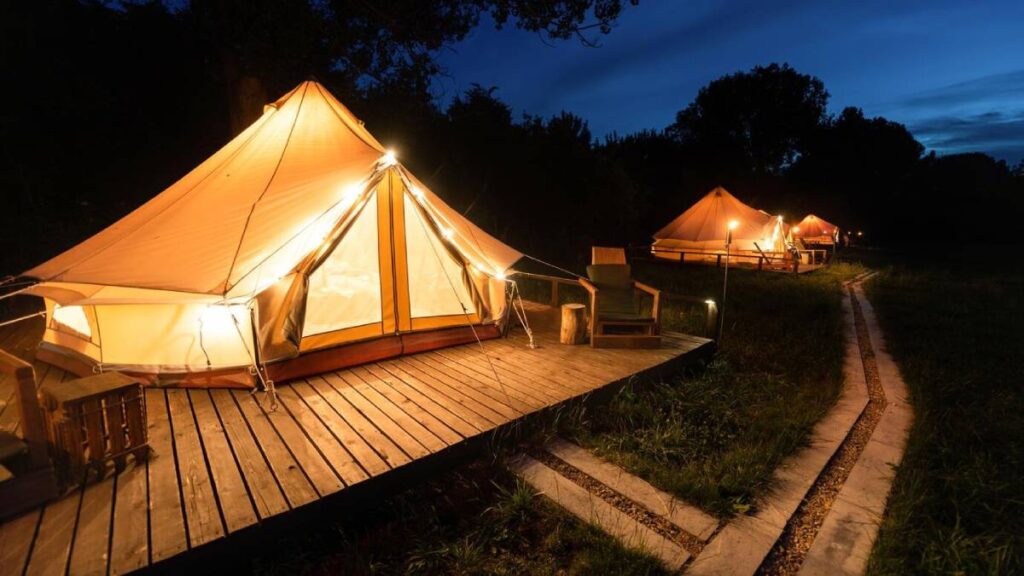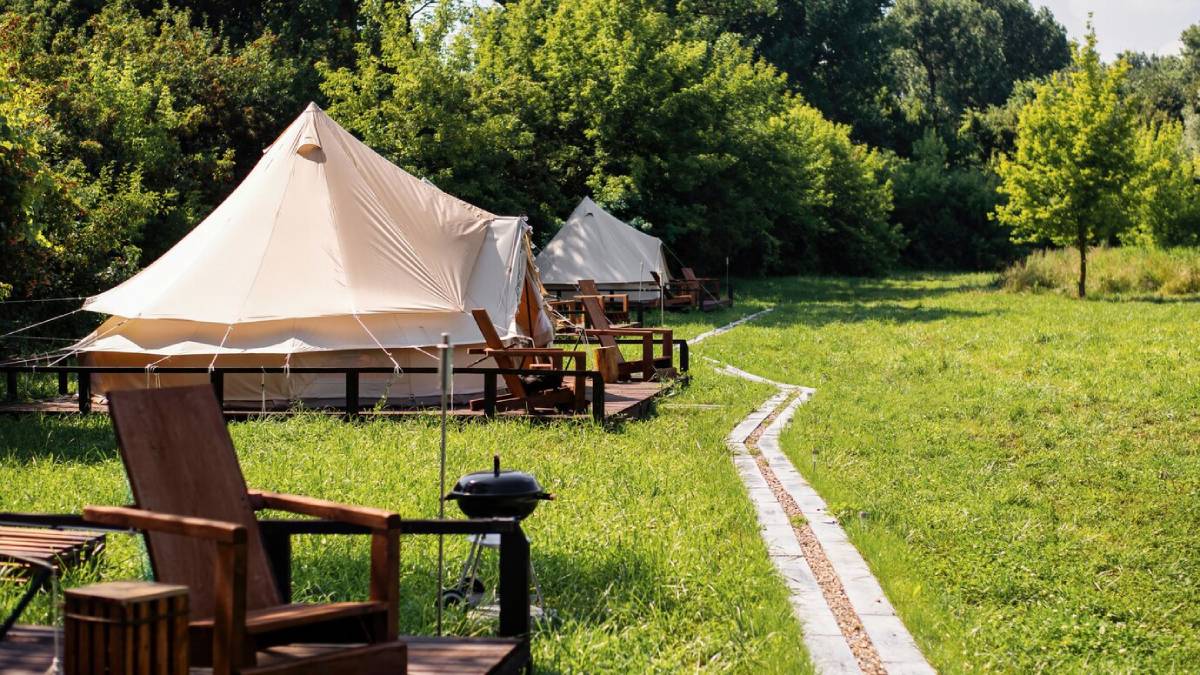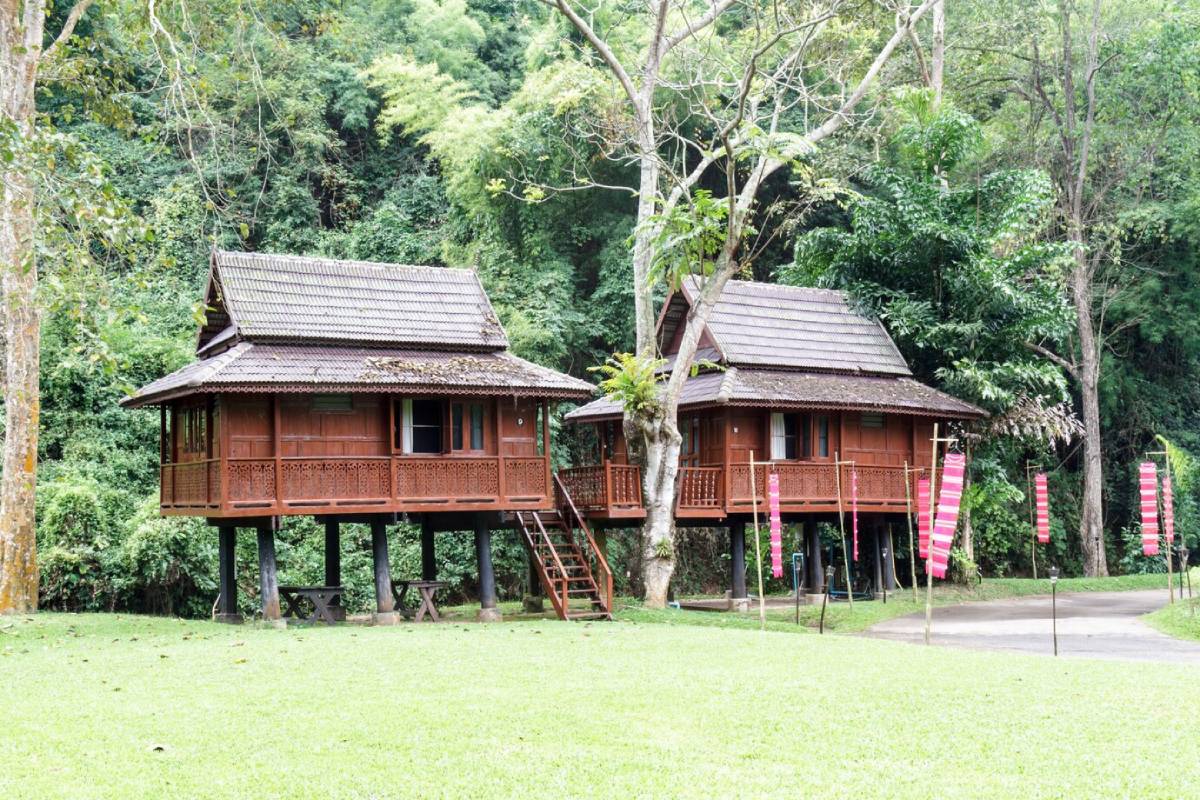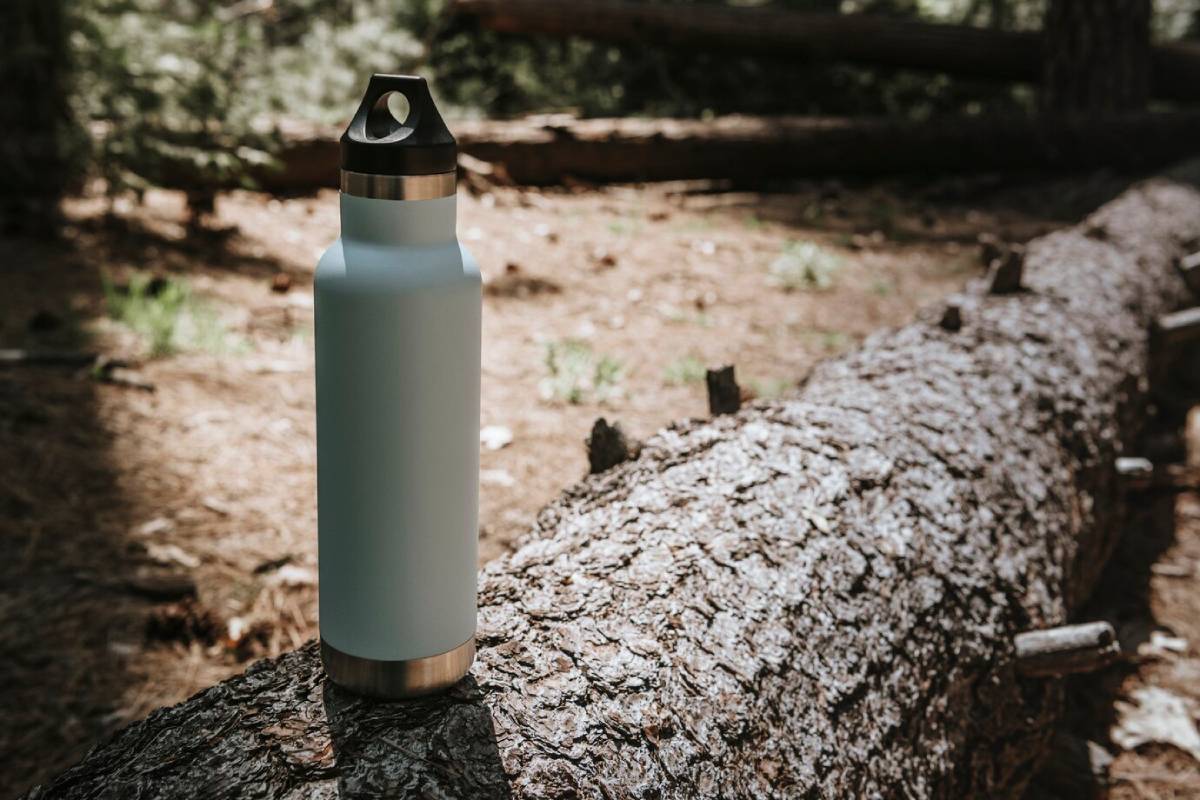Travel Blogs

Glamping: Combining Comfort with Sustainability
Let’s be honest—traditional camping isn’t for everyone. The bugs, the cold nights, the “where’s the bathroom?” moments. But what if you could enjoy the beauty of the wild without giving up comfort?
Glamping combines glamour and camping. You can sleep under the stars in comfort, with a proper bed, running water, and sometimes even a hot tub. Even better? Many glamping sites now focus on sustainability. This makes glamping eco-friendly and suitable for all kinds of travellers.
This guide shows how sustainable camping changes our view of the outdoors. You’ll also see how to enjoy luxury green travel while protecting the planet.
What Exactly Is Glamping?

Glamping is all about experiencing nature with added comfort and style. Try yurts, safari tents, treehouses, or glass domes instead of sleeping bags and tents.
It’s camping—but elevated.
But don’t let the word “luxury” fool you. Many glamping sites are built with eco-conscious design, low-impact materials, and green energy. These stays are becoming top choices for travellers who want nature and nurture.
Why Glamping Is a Sustainable Choice
When done right, glamping supports the planet in ways traditional tourism doesn’t.
Here’s why it works:
- Minimal infrastructure: Most glamping sites avoid heavy construction, leaving the land largely untouched.
- Smaller footprints: Fewer buildings, fewer emissions, less resource use.
- Off-grid living: Solar panels, composting toilets, and filtered rainwater systems are common.
- Nature appreciation: Staying close to nature fosters respect and awareness.
Glamping eco-friendly isn’t just a trend—it’s a smarter way to travel.
Types of Sustainable Glamping Stays
Let’s look at some popular glamping options that balance indulgence with eco-ethics.
1. Yurts
Yurts are circular and insulated structures. They often operate off-grid. These unique homes started in Central Asia. Now, they are popular at glamping sites all over the world. Many are made from local wood and canvas, making them light on resources.
2. Treehouses

Who doesn’t dream of living in the trees? Today’s treehouse glamps are made to protect trees. They use platforms and ladders that fit into the surroundings.
3. Geodesic Domes
These futuristic domes feature big windows, roofs for stargazing, and insulation to save energy.
4. Safari Tents
These tents provide an African-style experience. They have wooden floors, real beds, and solar lights. They’re perfect for global locations.
5. Eco-Pods and Tiny Cabins
Pods are compact and efficient. They use renewable energy and recycled materials to reduce their footprint.
What Makes Glamping Eco-Friendly?
Not all glampsites are equal. If you’re serious about sustainability, here’s what to look for:
Energy
- Solar panels or wind power
- LED lighting and energy-efficient appliances
- No generators or fossil fuel use
Water
- Rainwater harvesting systems
- Composting or dry toilets
- Low-flow taps and showers
Waste
- On-site recycling and composting
- No single-use plastics
- Natural cleaning products
Materials
- Recycled or reclaimed wood
- Locally sourced furnishings
- Organic fabrics and bedding
Community
- Locally hired staff
- Partnerships with nearby farms and artisans
- Cultural tours and education programmes
Top Glamping Destinations That Do It Right
1. Whitepod – Switzerland
Stay in dome-shaped pods in the Swiss Alps. They use pellet heating, solar power, and focus on zero-waste policies.
2. Clayoquot Wilderness Lodge – Canada
This luxury tented lodge on Vancouver Island is off-grid. It supports indigenous tourism and provides carbon offsetting for every stay.
3. EcoCamp Patagonia – Chile
These geodesic domes sit in Torres del Paine National Park. They are solar-powered and fully biodegradable. They are managed by local residents.
4. Bambu Indah – Bali
A bamboo glamping paradise features natural pools instead of chlorine. It has compost toilets and serves meals made from organic farming.
5. The Lazy Olive – Italy
Safari tents in Tuscany feature solar panels, organic vineyards, and locally sourced meals. They are rustic, romantic, and responsible.
Packing Tips for Sustainable Camping
Your glamping host might go green—but what about you? Here’s how to match their efforts:
Eco-Pack Essentials:

- Reusable water bottle
- Biodegradable toiletries
- Reusable bags and containers
- Headlamp or solar lantern
- Quick-dry towels and layers
Pro tip: Don’t bring plastic-wrapped snacks or mini bottles of shampoo. Glamping isn’t an excuse to bring single-use convenience.
The Human Side of Sustainable Camping
Glamping also brings you closer to the people and stories behind the land.
Real Story: A Night Under the Stars in Namibia
Emma, a traveller from Bristol, stayed at a solar-powered glamping site in Namibia’s desert. One night, a local Himba woman told stories around the campfire. No Wi-Fi. No distractions. Just stars and conversation.
Later, Emma bought handmade jewellery from the camp’s artisan group. This helped preserve culture and create jobs.
Glamping can be about connection—to the Earth, and to each other.
How to Spot Greenwashing in Glamping
Some places throw around words like “eco” and “sustainable” without any real action.
Watch for these red flags:
- No information on energy or waste management
- Plastic water bottles or throwaway toiletries
- No links to local communities
- Large-scale developments in wild places
If you’re unsure, email the host or check guest reviews for honest feedback. Authentic luxury green travel is transparent and proud of its efforts.
Why Glamping Appeals to All Generations
Glamping fits couples, families, and solo adventurers alike. Glamping is perfect for everyone. Glamping has something for everyone. It’s great for young digital nomads, honeymooners, and retirees checking off their bucket lists.
Here’s why:
- Comfort without compromise
- No experience needed (unlike hardcore camping)
- Perfect for short getaways or long digital detoxes
- Deep connection to nature without giving up a warm shower
It connects eco-living with modern needs. Many travellers are looking for this sweet spot.
Quick Tips for Booking a Glamping Holiday
- Read the sustainability policy on their website
- Choose locations away from over-touristed areas
- Avoid chain resorts—go for small, locally owned operations
- Book directly when possible to support hosts
- Ask questions about water use, waste, and energy
Booking smarter means travelling better.
Comfort Can Still Be Conscious
Glamping eco-friendly is more than just a pretty tent—it’s proof that comfort doesn’t have to cost the Earth. Sustainable camping lets us explore mindfully. It helps us connect, relax, and travel with purpose.
So next time you’re planning a break, skip the hotel and choose a starlit stay. Trade the minibar for mountain air. Choose nature—not at the expense of it, but in harmony with it.
Where would you love to glamp next? Share your dream eco-stay in the comments and help others discover a greener path.









